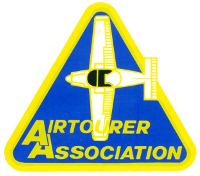Element Take-off
An element take-off is also known as a formation take-off or a pairs take-off. An element take-off begins with an element of two aircraft aligned on the runway with the second aircraft in echelon position with a minimum of three metres lateral wingtip spacing. For formations of more than two aircraft, and where there is sufficient space on the runway, following aircraft will also line up in pairs behind the first pair, as briefed.
When the Wings have completed their line-up checks and are ready, they will look at the Lead. The Lead will give the run-up signal for full power on the brakes by twirling a raised finger. Both aircraft in an element will run-up to full power, check engine instruments, then, the element lead aircraft only is to reduce power by 2" MAP (or to 21") or as briefed. Be sure to check outside the cockpit during the run-up to detect any movement of your aircraft.
The Lead will then give the brakes release command by tilting his/her
head back, then smoothly, but quickly, nod the head so that the
chin touches the chest. The time that leads chin touches the
chest is the signal to release brakes. (Alternatively, the
brakes release can be signalled through a CTAF radio
[Callsign], rolling in
three, two, one, go
call.
The second aircraft in the pair will roll with the first aircraft in the pair. If there is more than one pair, intervals between pairs must be decided in the briefing (typically, three to five bananas).
Lead must remember to smoothly rotate to the after take-off attitude as rotating too rapidly will cause the Wing to be well below the plane on initial climb out.
The Wing should rotate and lift-off with the Lead, keeping the Lead's head on the horizon and maintaining the wide station on the extended echelon line. Directional control is aided by occasional reference to the runway. The Lead should check that Wing is in position early in the roll.
Due to the lower power setting, the after take-off and climb out attitude will be slightly shallower than for a normal full power individual take-off. When comfortably clear of the ground, the Lead will raise the flaps. In a pair, the second aircraft will raise flaps when he/she sees the flaps of the first aircraft begin to move to the up position. The second aircraft in the pair moves into the briefed station (typically echelon) after the after take-off checks have been completed.
Following aircraft should ensure that the preceding aircraft are in a clean configuration. If not, an advisory radio call should be made. However, it is each pilot's responsibility to ensure that their own checks have been completed.
